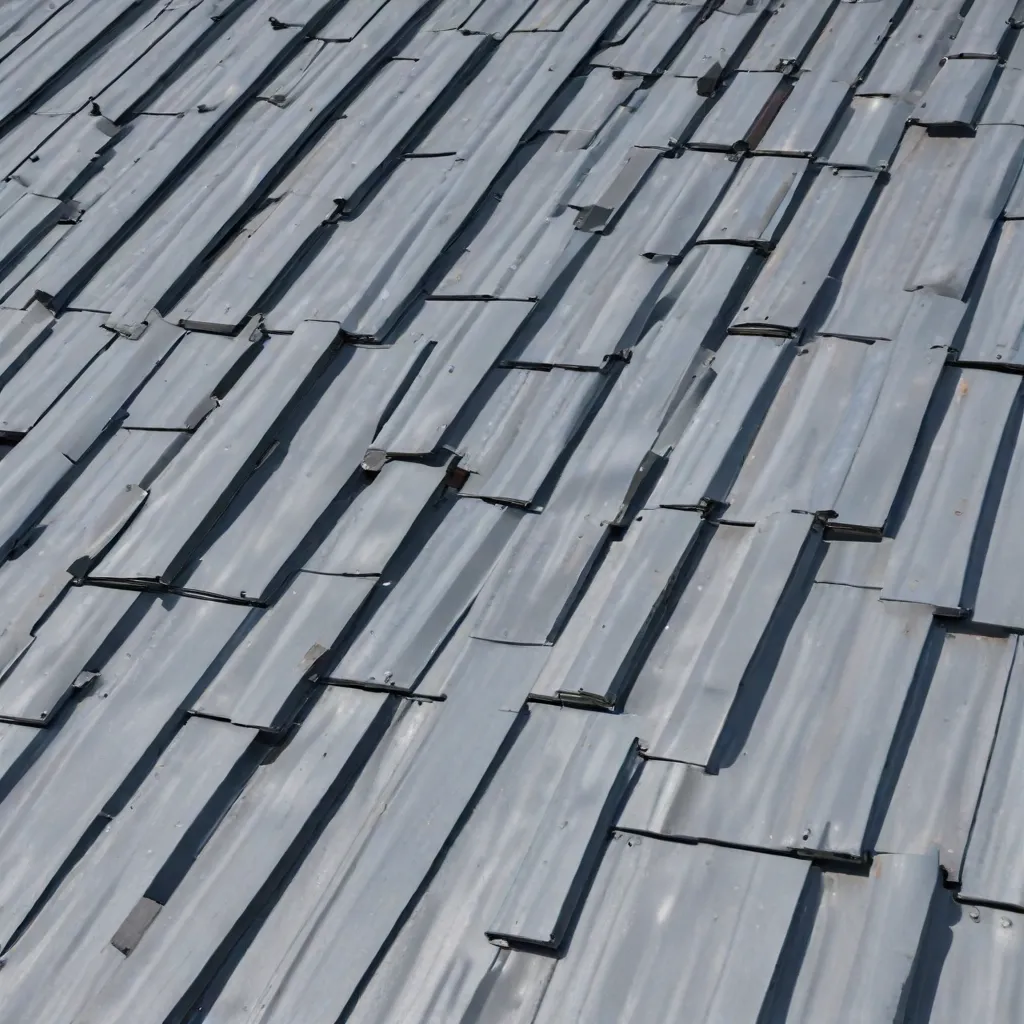
As an experienced roofing specialist, I’ve seen the exciting transformations that can occur when homeowners decide to upgrade their roofs. One of the most impactful upgrades is the transition to a metal roof system. Metal roofing offers unparalleled durability, energy efficiency, and a versatile aesthetic that can elevate the look of any home. However, the decision to retrofit an existing roof with metal goes far beyond just the roof itself – it’s an opportunity to improve the overall sustainability and performance of a building.
Sustainability Considerations
When it comes to environmental impact, metal roofs excel. Galvalume and aluminum roofing materials contain a high percentage of recycled content, often 25% or more. What’s more, metal roofs are 100% recyclable at the end of their long lifespan, making them a truly circular building product. This stands in stark contrast to traditional asphalt shingles, which end up in landfills after their relatively short 15-20 year lifecycle.
The energy efficiency benefits of metal roofs are equally impressive. Their high thermal emissivity allows them to reflect a significant portion of the sun’s radiant heat, reducing the load on a building’s cooling system. This can translate to substantial savings on monthly energy bills, especially in hot climates. Metal roofs also integrate seamlessly with solar photovoltaic (PV) systems, allowing homeowners to generate their own renewable electricity.
Roof System Upgrades
A metal roof retrofit presents the perfect opportunity to improve a building’s overall thermal performance. By incorporating additional insulation during the re-roofing process, you can dramatically enhance the roof’s R-value and minimize heat transfer. Optimizing insulation levels is crucial, as it unlocks the full energy-saving potential of the metal roof.
Equally important is proper ventilation. Metal roofs, with their raised-seam or standing-seam profiles, create a ventilated air space between the roofing material and the underlying sheathing. This ventilated attic space allows hot air to escape, reducing cooling loads and the risk of moisture buildup. Careful design of ridge, soffit, and gable vents is essential for maximizing this benefit.
Economic Benefits
The long-term cost savings of a metal roof retrofit are undeniable. While the initial investment may be higher than traditional asphalt shingles, metal roofs typically last 40-70 years – two to three times longer. This extended lifespan translates to fewer roof replacements over the lifetime of the building, reducing overall maintenance costs.
Moreover, the energy efficiency of metal roofs can lead to significant reductions in monthly utility bills. Depending on climate and building characteristics, homeowners can expect to save hundreds of dollars per year on their heating and cooling expenses. These savings compound over time, making metal roofs a wise long-term investment.
Beyond the direct financial benefits, a metal roof retrofit can also increase a home’s property value. Prospective buyers often view metal roofs as a desirable, high-quality feature that adds to the overall appeal and curb appeal of a home.
Practical Implementation
The process of replacing an existing roof with a metal system involves several key steps. First, the old roofing material, such as asphalt shingles, must be carefully removed and disposed of properly. The underlying roof deck is then inspected for any necessary repairs or replacements.
Next, a high-quality underlayment is installed to provide an additional barrier against water intrusion and ice dams. Choosing the right underlayment, whether a synthetic water-resistant barrier or a self-adhering ice and water shield, is crucial for the long-term performance of the metal roof.
When it comes to selecting a contractor for the job, it’s important to work with an experienced, GAF-certified professional who specializes in metal roofing installations. They will have the necessary expertise to ensure proper fastening techniques, flashing details, and overall workmanship to maximize the roof’s durability and weather resistance.
Greener Alternatives
The transition to a metal roof doesn’t have to stop at the roofing material itself. Homeowners can further enhance the sustainability of their home by integrating renewable energy solutions, such as solar panels. Metal roofs provide an ideal platform for solar PV systems, as their sturdy construction and long lifespan complement the 25-30 year warranties of most solar panels.
For a truly eco-friendly approach, some homeowners are exploring wind turbine installations on their metal roofs. While less common than solar, small-scale wind power can be a viable option in certain geographic areas, providing an additional source of on-site renewable electricity.
When it comes to material selection, look for metal roofing products that incorporate recycled content and are themselves recyclable at the end of the roof’s life. This closed-loop lifecycle is a hallmark of sustainable building materials and aligns with the principles of a circular economy.
Performance Optimization
Beyond the environmental and economic benefits, metal roof retrofits can also optimize the thermal regulation and water management of a building. The reflective nature of metal roofs helps regulate indoor temperatures by reducing heat gain, while the raised-seam or standing-seam profiles create a ventilated air space that further enhances cooling efficiency.
Proper water management is also critical for the long-term performance of a metal roof. Selecting the right underlayment, ensuring proper flashing installation, and incorporating gutter systems that efficiently channel rainwater away from the building’s foundation are all essential considerations.
By thoughtfully integrating these features, homeowners can transform their homes into high-performing, sustainable havens that not only look great but also offer tangible financial and environmental benefits for years to come.
In conclusion, metal roof retrofits represent a strategic upgrade that can elevate the sustainability, energy efficiency, and overall value of a building. As an experienced roofing specialist, I’ve witnessed firsthand the transformative power of these systems. I encourage homeowners to explore the wealth of opportunities that metal roofing solutions can provide, ultimately contributing to a greener, more efficient future for our built environment.
For more information on metal roofing options and expert installation services, I invite you to visit Genuine Roof Systems. Their team of knowledgeable professionals can guide you through the process of transitioning to a metal roof that aligns with your unique sustainability goals and aesthetic preferences.

























